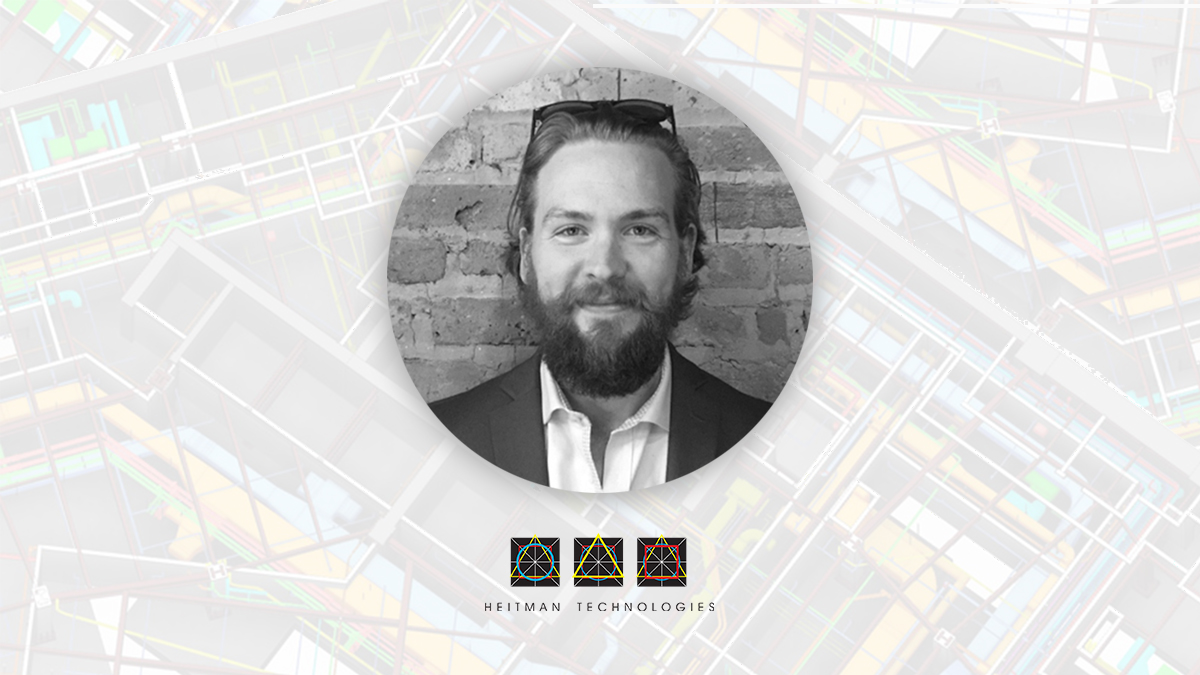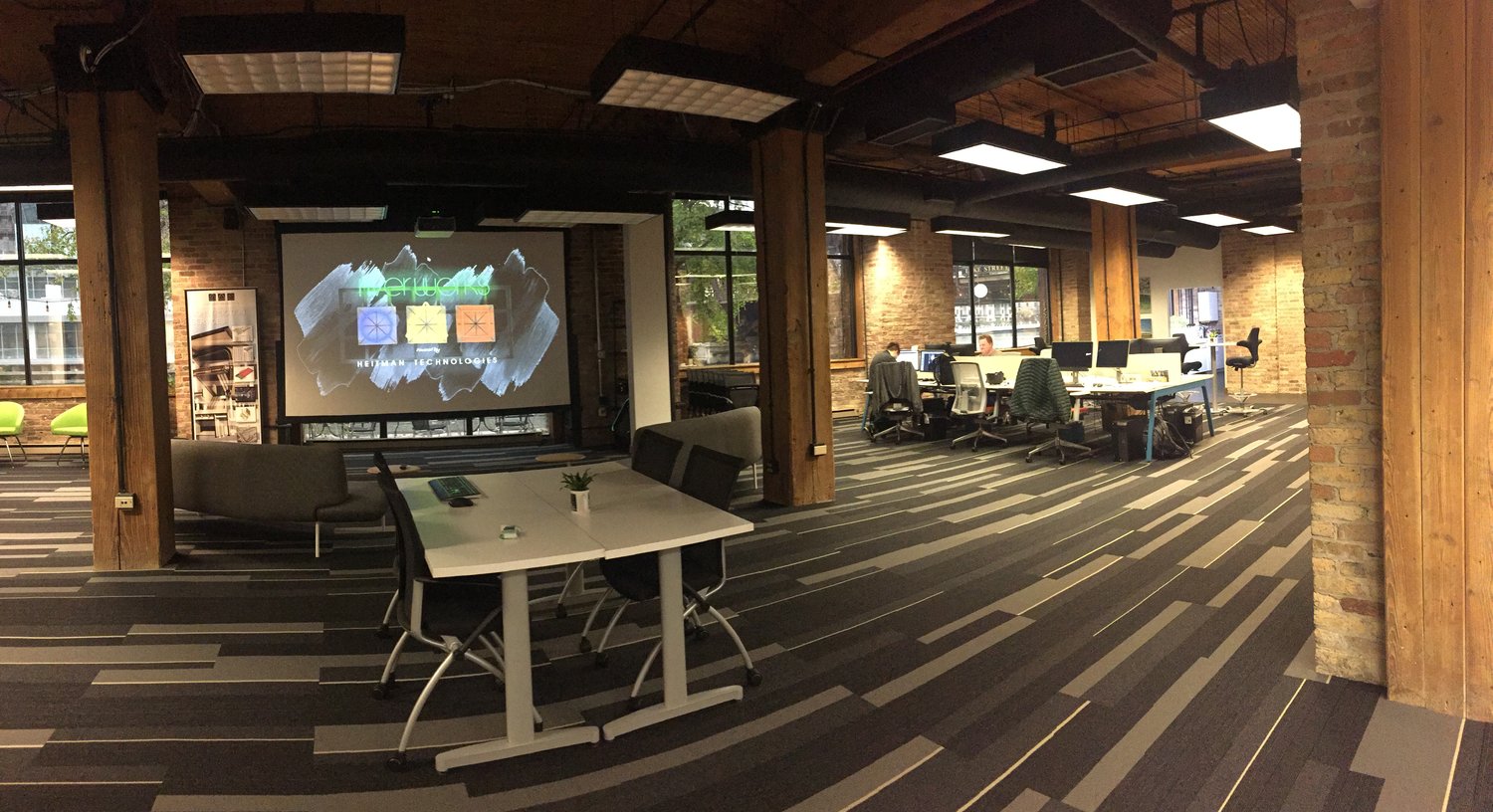
The path that led Todd Heitman to his role as Director of Technology and Innovation at Heitman Technologies may seem completely unrelated to his current career. It was art, specifically, the theater, which brought him to brokering and construction, which then ignited a deep passion for technology. That passion now defines him and his company.
The children in Heitman’s family had always been pushed toward the arts. His sister, in fact, is an opera singer. Thus, it was no surprise when he attended Atlantic acting conservatory in New York, founded by the venerable playwright David Mamet and actor William H. Macy. When asked to recite the famous “coffee is for closers” monologue from the play Glengarry Glen Ross, a story of four Chicago real estate agents, the actor in Heitman – the salesman – responded. “For some reason I felt driven to move into real estate brokerage.”
Returning to the Chicago area post-conservatory, he took a crash course in real estate brokerage, getting his license while working in the field for a construction company. “I wanted to know the whole process,” Heitman explained, “from hashing out a deal to realizing a project.”
He could see then the role technology was already playing in the real estate process, particularly in ideation and design, and it sparked his interest in tech. “A lot of the tools in play were real estate tools like the MLS (multiple listing system),” Heitman remembers, “tools everyone has access to.” He realized that the most successful brokers found unique ways to differentiate themselves.
In fact, Heitman Architects had already established itself as a leader in parametric, or 3D, modeling software, fully adopting building information modeling (BIM) in 2004. Heitman was interested in tools like those out of curiosity, but also as a broker, and was looking for new ways to apply them. He was using Google Earth to make “very robust” maps of properties for use with clients. He was also learning virtual reality technology as it was becoming more mainstream.

Essentially, Heitman was always constantly on the lookout for new tech. He just does it for a living now. His work puts Heitman Technologies on the leading edge of what can be done for clients today, but what excites him most, he admits, is the search. “I get maybe 200 Google alerts a day and sift through them all to find something new,” Heitman said. “Discovering a still little-known product or advancement, it’s almost like a game.” Since a simple phone call is all it takes to win the game, it’s no surprise that companies developing new tech want to talk about it.
“That atmosphere of collaboration in the tech world is really satisfying, too,” Heitman said. “I’m demoing almost everything out there, taking notes on what’s different, figuring out pros and cons, to see what’s really going to benefit the company.” This has opened up a good deal of opportunities for Chicago-based Heitman Tech. They travel with portable VR sets to present to clients anywhere. This is particularly useful considering they have begun to gain traction with international clients. For instance, Heitman recently conducted a VR presentation in Bonn Germany for a Fortune 100 company.
Being a tech company, however, doesn’t mean you’re different anymore. “Incorporating technology is now simply necessary for survival,” Heitman said. “What I’m using Heitman Tech for is to move at the speed of the market, even beyond it, to really focus on exploring the field without necessarily worrying about competition.”
After he began about a year ago to pull Heitman Technology’s work into a tangible arm of Heitman Architects, the ways the company serves its clients have truly transformed. “VR and augmented reality have turned our three-hour meetings into one-hour meetings,” he said, “taking client responses and making changes instantaneously, getting that yes, having the whole team looking at a virtual model to hash out the checklist together at the same time… The efficiencies are incredible.”
Heitman’s already seeing what’s next for BIM and thinking of it as a building block for other tools. “I’m looking at having a fully connected job site, for example,” he enthused. “Constantly pushing the field means we can use advancements in tech to serve clients in ways that go beyond the traditional architectural process. Way beyond.”
This article was sponsored by Heitman Technologies.


Discussion
Be the first to leave a comment.
You must be a member of the BuiltWorlds community to join the discussion.